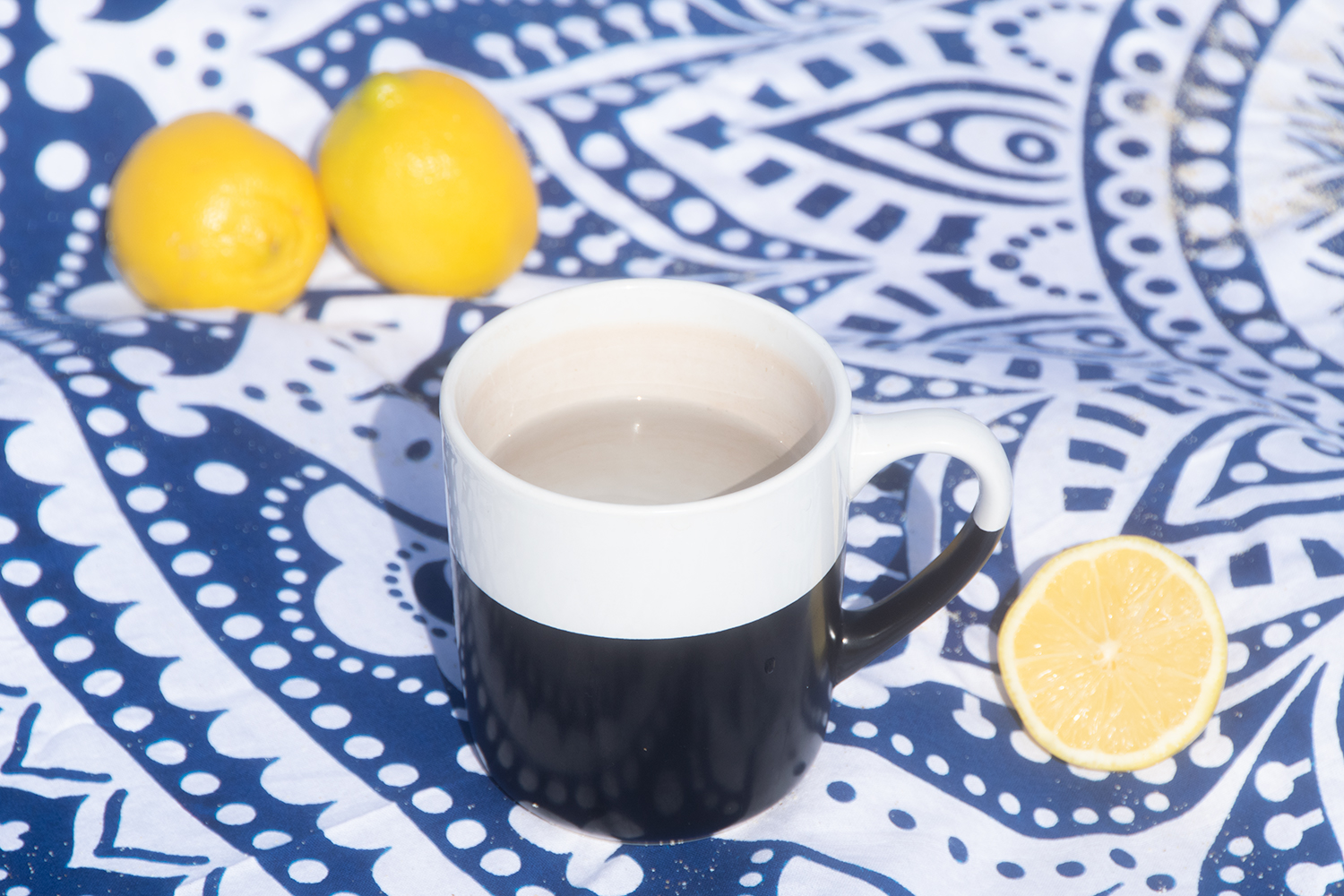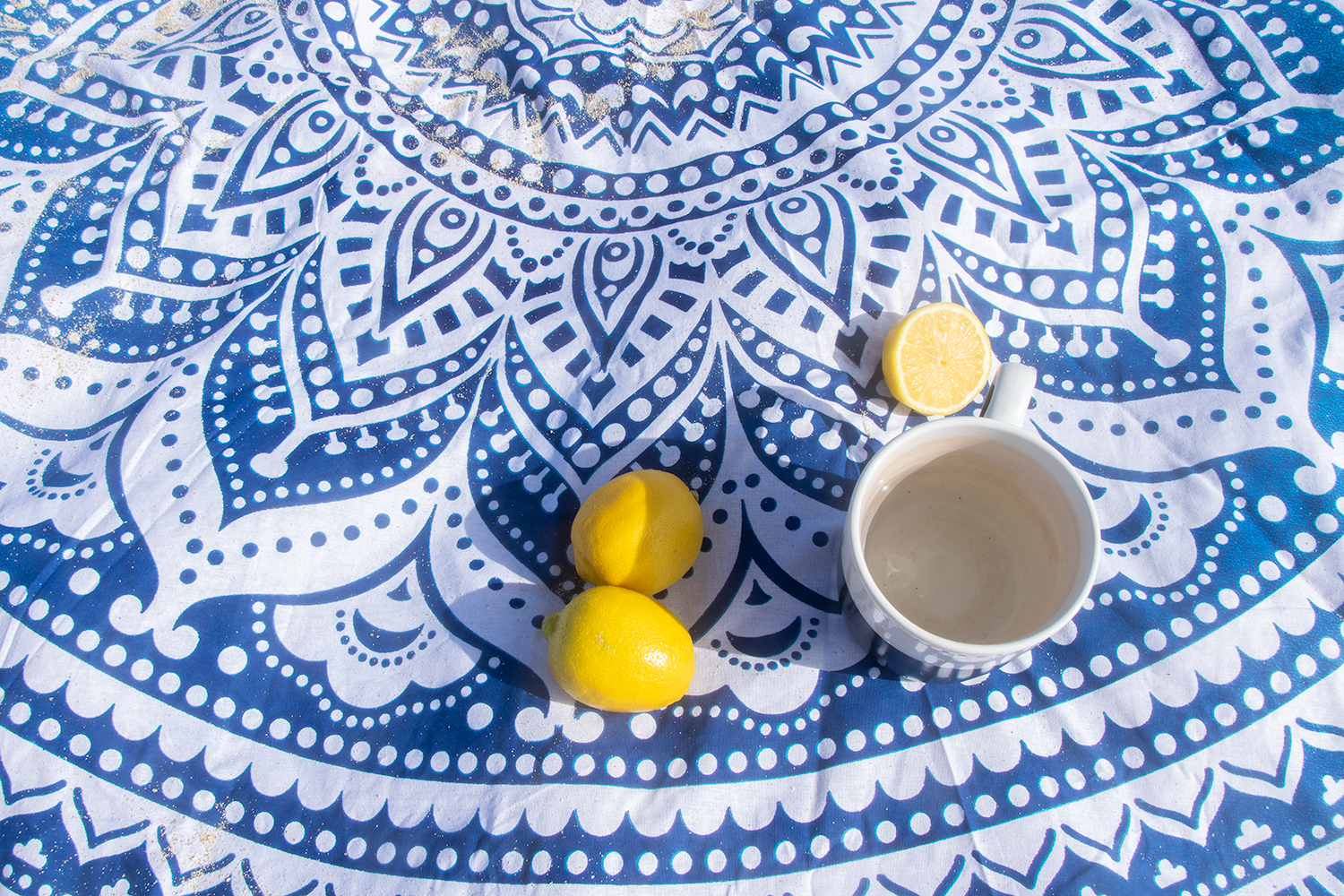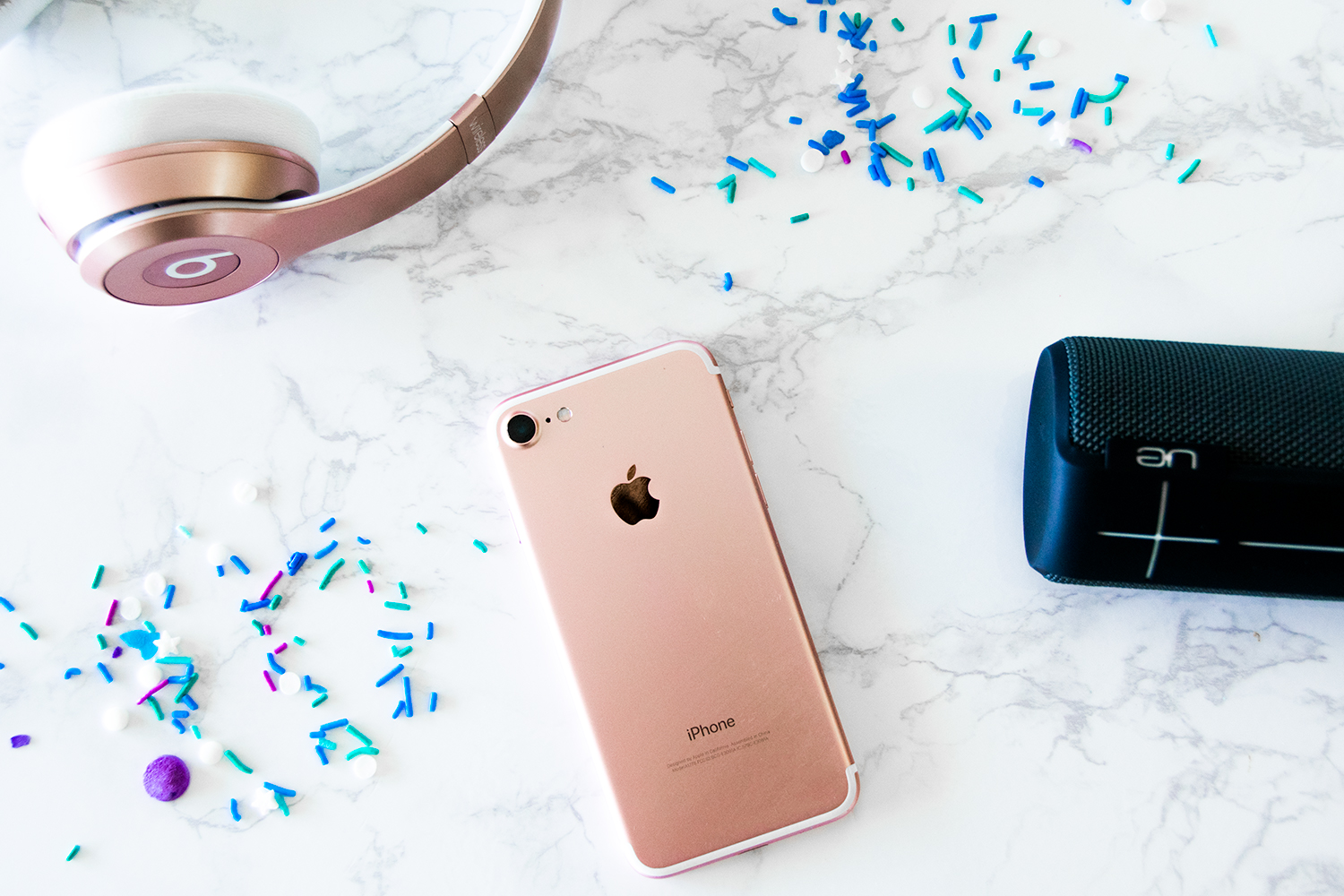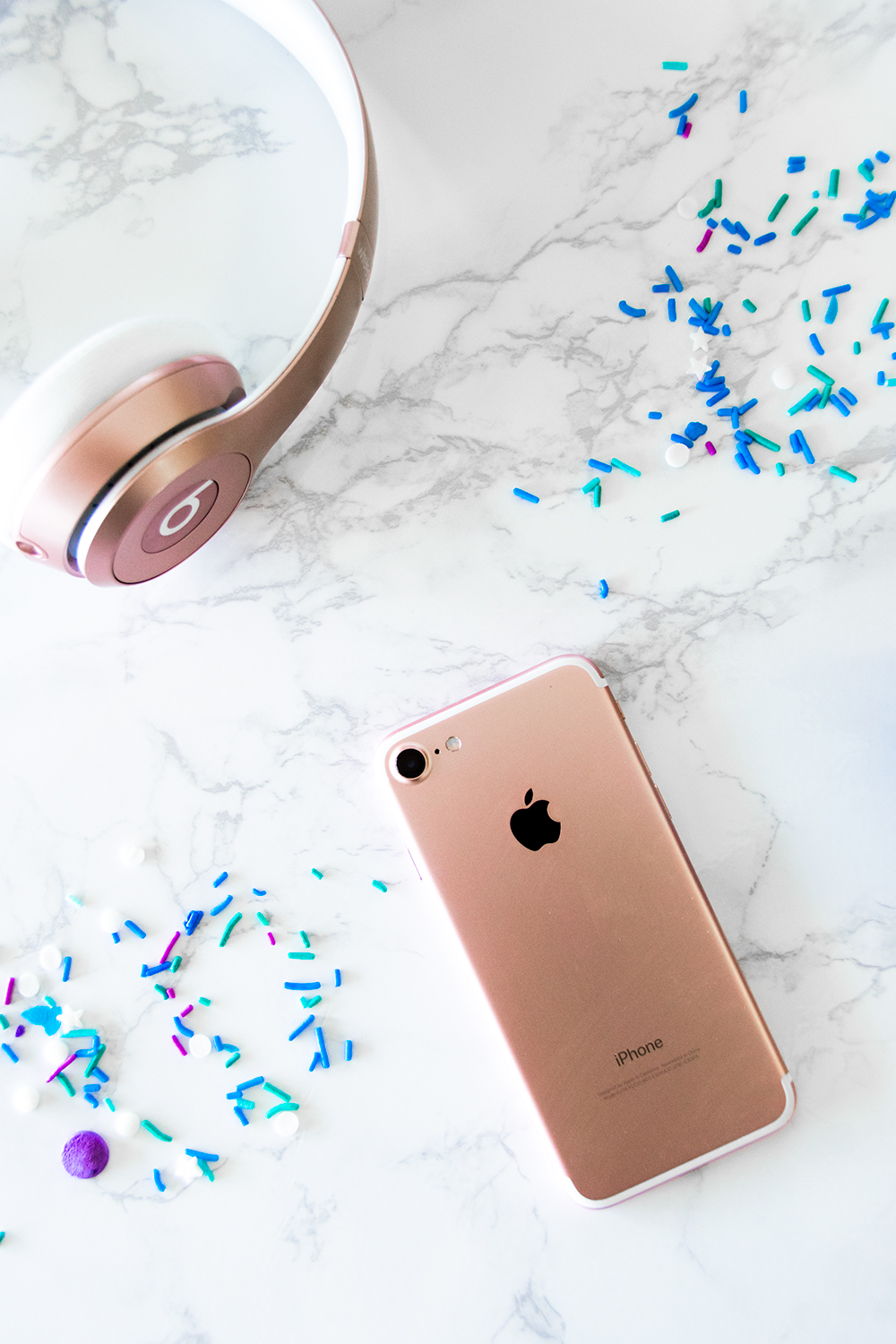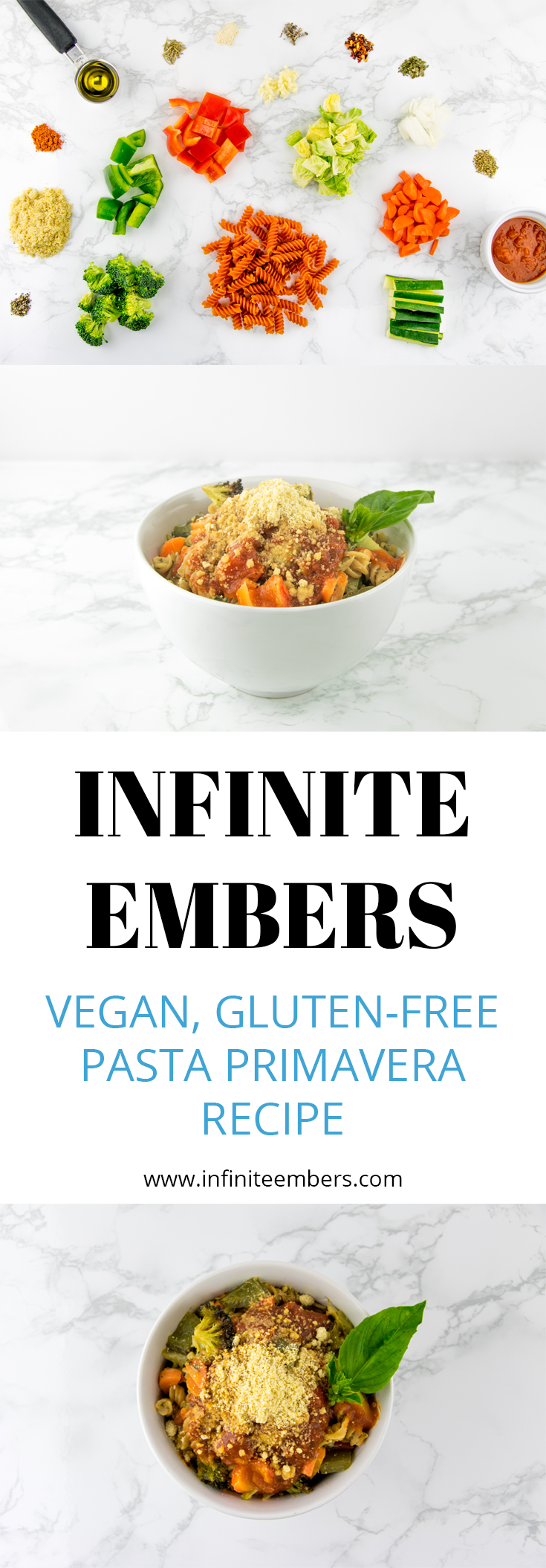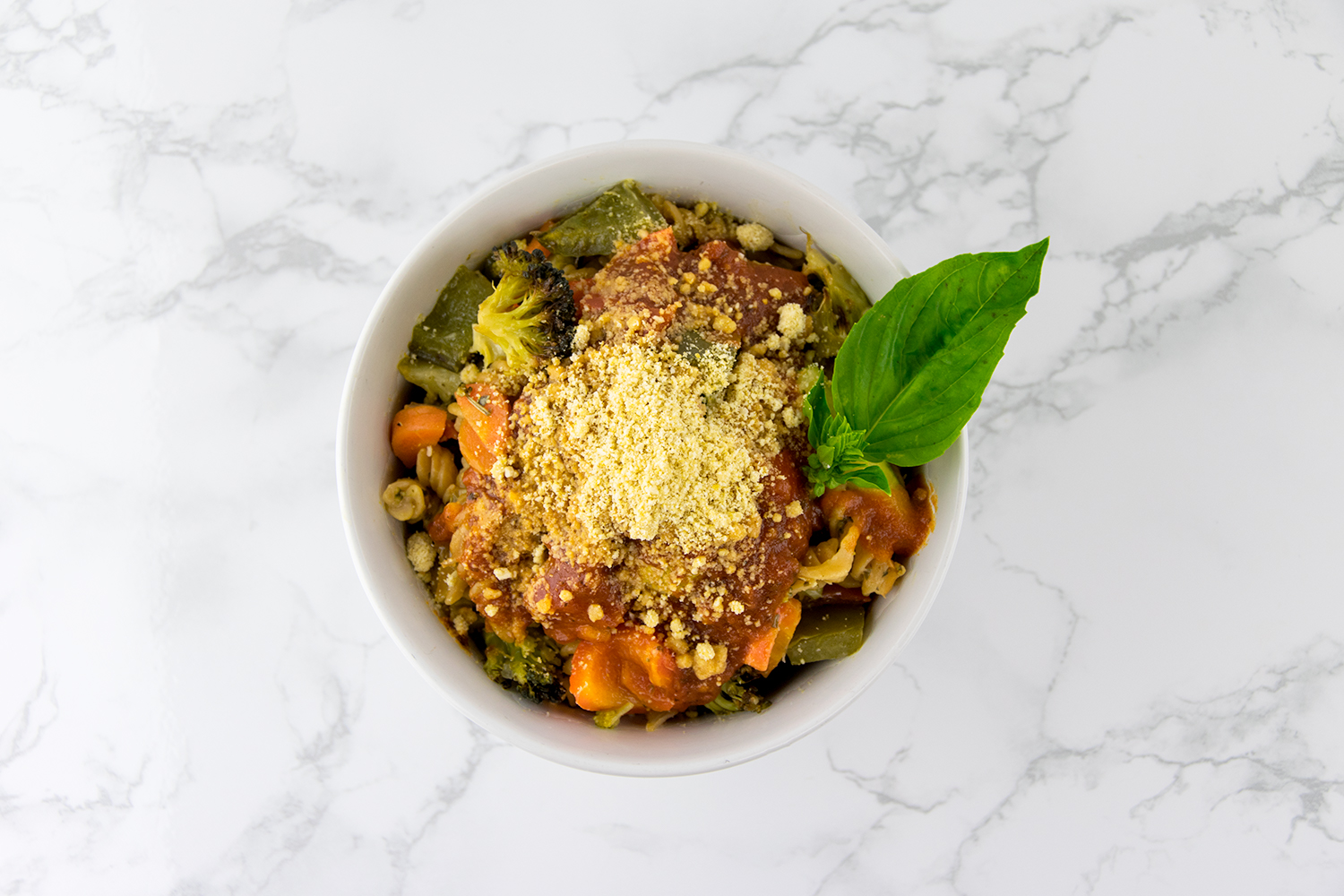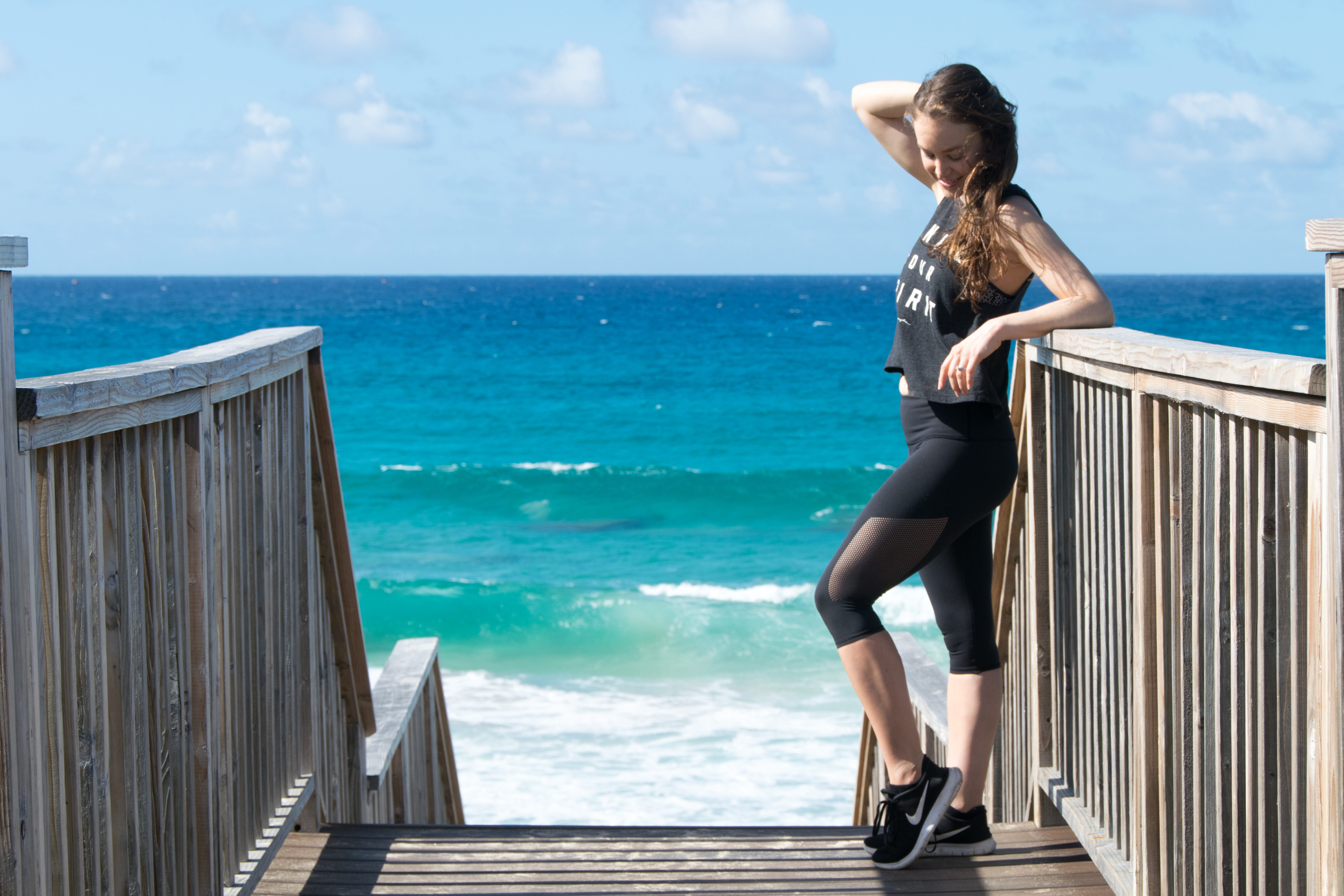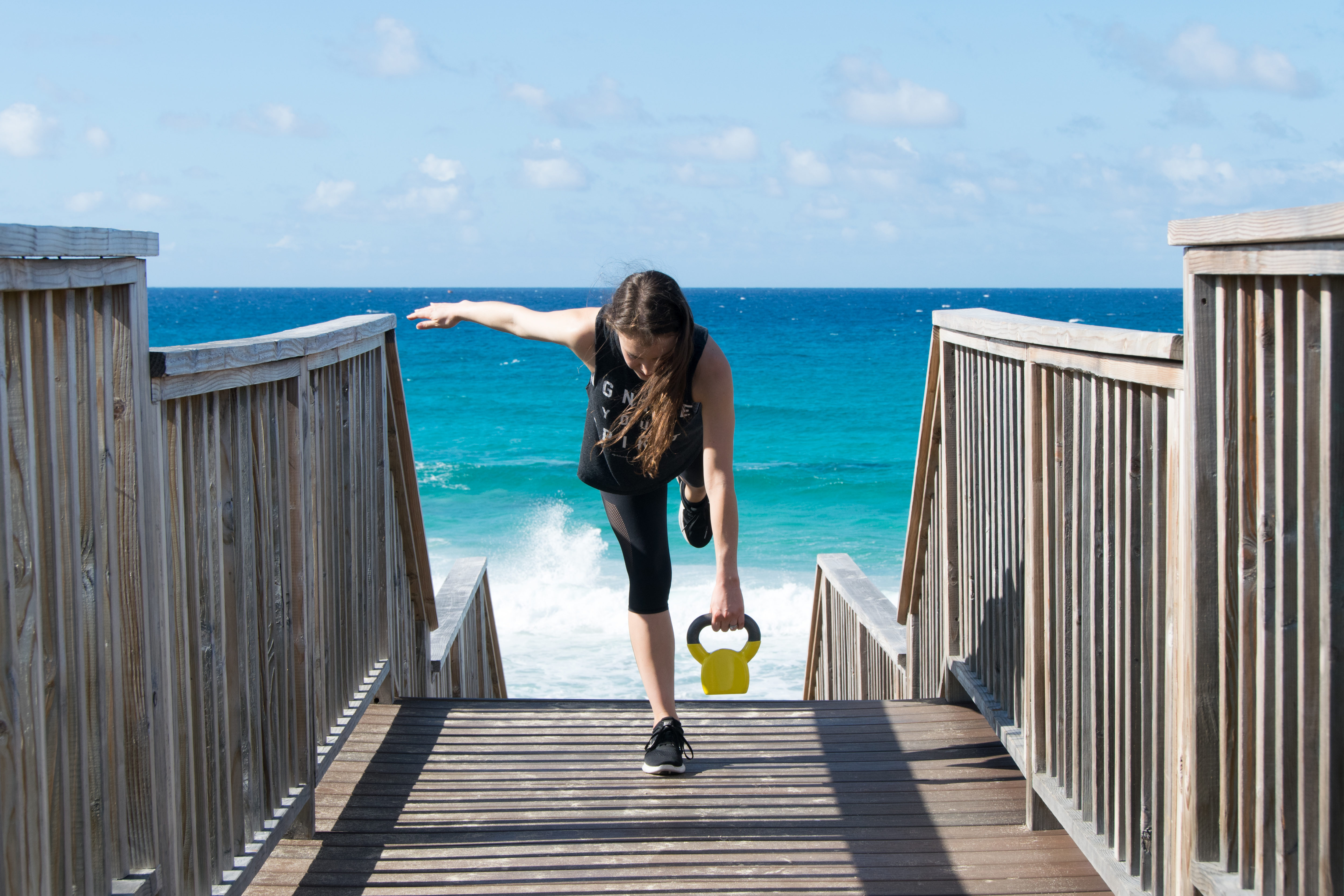
Let’s spill the tea on what’s it’s really like to be a fitness instructor for a living.
The life of a fitness instructor can be super alluring. You’re probably picturing someone working out all day, wearing a uniform of sports bras and leggings, drinking lots of smoothies. And, to be fair, you’d be sort of right. A lot of people dream of leaving behind the standard 9-5 career path to share their love of yoga/spin/barre/etc with the world instead. That’s exactly what I did; I left behind a stable, lucrative career working in television writing to launch into the wild wilderness of teaching. I absolutely LOVE it, and wouldn’t go back—it was the right decision for me. But that doesn’t mean it’s an easy path.
Being a fitness instructor or trainer is definitely a dream job. But it’s a dream that can be seriously hard to achieve and maintain, and there are real downsides to it, too, that are often hid behind the curtain.
I would know: I’ve been a fitness instructor for almost 7 years now.
I mean holy crap! These years have gone by so quickly!
I got my start teaching barre in 2012 in Los Angeles. I was a television writers assistant at the time, and I was on hiatus between shows looking for work. I’d always been a fitness nut, and after working the front desk of my favorite barre studio for a while, I decided to take a leap and audition to teach.
My life changed that day! But I didn’t switch to just teaching right away. I wasn’t quite ready to let go of my TV career until I became seriously hurt with a chronic muscle spasm in my right neck/shoulder. Not quite sure how I’d make teaching fitness work as a career, I moved to San Diego and began really focusing on teaching in 2014. I was in constant pain and tension and wanted to learn more about the body so I could heal myself.
Thus, this blog. And I now teach yoga, spin, aerial yoga, and the Lagree method, because I was/am super hungry for knowledge to help myself and others. I’m also currently studying to get my personal training license!
Because I’ve taught so many different methods in the industry, I’ve seen it from all sides. I’ve also taught in traditional gym settings, boutique fitness studios, chains, small businesses, even on the beaches of a Disney resort—you name it, I’ve probably done it.
After all of that, here’s what I know to be true about being a fitness instructor:

It’s one of the most fun jobs in the world.
Like I said, I absolutely love my career in teaching. For me, there’s no rush quite like when I’m in my element, leading a class.
Now, obviously, it’s a very different experience depending on what and where you’re teaching fitness. I’m covering a pretty wide umbrella here.
Teaching Yin yoga at a small studio is a completely different experience than being a bootcamp instructor at 24 Hour Fitness, which is totally different from teaching spin at someplace like SoulCycle. We’re talking difference in expectations, experience/teaching requirements, perks, and pay. So the first thing I want to stress is that everyone will have very different experiences in their careers as instructors. This is not your standard, climb-the-ladder kind of career.
There is a wide variety of certifications, knowledge, and corresponding pay when it comes to the job of “Fitness Instructor”.
The title “fitness instructor” is a tricky one because it covers such a wide range of possible careers. Typically, boutique studios require a higher standard of instructors than, say, a large chain gym, since their clients are paying for a premium fitness experience. This means instructors need to be the cream of the crop, and the competition for a spot to teach is often fierce.
That is NOT to say that studio instructors are better than the ones at gyms! No no, it all depends on the teacher. But studios will usually pay more—and require more of their instructors in return, including ongoing evaluations and trainings. The requirements for every single fitness location are different, which leads to a wide range of experience in a given field.
Like any career, you have to invest time and (usually) finances for education first. You need to be certified to teach whatever it is you want to teach. Now, some boutique studios will train their instructors in-house and cover the costs. This was actually how I got into barre. I did the studio’s training, and fortunately did not have to pay for it. Same with my first spin studio. But that’s really rare; most types of teaching require you to have an outside source of education before you can start to look for jobs.
The different possible certifications also (you guessed it) vary widely. You can be certified to teach spin in an afternoon or go through months of training at a studio. Education among instructors varies widely and isn’t really standardized. (Just fyi, personal training is its own thing and I’m not really talking about it in this post)
To become a great instructor, you must a) teach, over and over and over again and b) seek out knowledge and continuing education constantly. (among other things)
Being a fitness instructor usually requires entrepreneurship.
This is actually one of the most appealing parts of this career to me… but it might really deter a lot of people, because I’m telling you now, this line of work is a HUSTLE. A lot of what you get out of this career comes from what you put in it.
In order to teach fitness full-time, you often have to get creative to make a living. This might mean branching into training private clients or creating classes of your own. It’s really hard to say how much you can make as a fitness instructor, because honestly the sky’s the limit. There’s a big range, which I’ll talk about in a bit. But either way, you usually need to come up with multiple revenue streams in order to create a thriving standard of living for yourself.
Depending on where you teach, as an instructor you’re almost always working freelance, as an independent contractor. You own your own business. What’s more:
You ARE your own business.
Gaining a client following is critical, so it’s helpful if you’re naturally outgoing. You have to market yourself and sell yourself constantly without making it feel like you are. Of course, I find that the best instructors really get to know their clients and connect with them, so that this happens more effortlessly. That’s the best part of the job—my clients are my friends! I feel like authenticity always leads to success.
But this was a big challenge for me in the beginning—I was introverted, insecure. It wasn’t until I found myself and my confidence that my fitness career really started to take off. Teaching helped: it forced me to get out of my own head and out of my own way!
Side note: instructors also need to remember that you won’t connect with everyone, you won’t make everyone happy, and you can’t take it personally.
An active Instagram account/social media presence in this era is KEY to helping fitness instructors stay in touch with clients outside of class. It’s also the best way to keep them up to date on your schedule. I really love Instagram for that reason—it’s where most of my clients choose to contact me (slide into my DMs, y’all!) and gives me a platform to promote events.
Because you and your personal brand are your livelihood, you have to be adept at wearing multiple hats.
There’s a big difference between loving fitness and teaching it.
This is probably one of the most important things I’d like to get across—just because you love working out does not mean you’ll love teaching, because they’re two totally different experiences. A good teacher should have their attention on the clients at all time, not themselves and their own workout!
To be fair, I mean, with spin, yes, you do the workout with your clients. (And you better be doing it at 150% if you’re asking them for 100%.) Same goes for cardio dance/things like Zumba where participants follow the instructor’s body movements. But even then, as the instructor, you aren’t thinking about getting in your workout for the day. You’re working. And I mean working.
Fitness instructors have to be masters of multitasking.
Remembering your class plan, giving cues (and making them good cues), staying on time, watching clients’ form, demonstrating the moves (with perfect form!), managing music/lights/AC… You gotta be a multitasking pro to succeed.
There’s also a huge performance aspect to teaching: you’re up in front of a crowd of people, with everyone watching you. Your movements must be precise and your personality must be engaging. I used to do dance performances and competitions, and every single time I teach it still feels the same way as stepping out on a stage.
My secret way to get in the right headspace before teaching is to go into the bathroom and take a Power Pose stance, close my eyes, and breathe. A mini meditation. Because once class starts, it’s not stopping! And no matter what happens in class, you’ve got to be able to roll with it—your music might stop playing, the A/C could go out, you’ll have to kindly ask clients to stop talking (please don’t talk in class, people!)… You must be able to be present, focused, and adaptable.
Being a fitness instructor requires a lot of physical and mental energy.
The pressure to be ON can get overwhelming. You know how you have those days where you don’t feel so great and don’t want to work out? Yeah, we have those days, too, but as the instructor you often don’t have a choice—you have to bring your A game, every time. The job requires major stamina.
There can be a negative pressure in that regard to push yourself too far, because if you don’t teach, you won’t get paid, and many instructors work themselves to exhaustion. It’s easy to forget to give to ourselves, too. I’ve made that mistake time and time again, but am now better about taking breaks whenever I need to preserve my energy.
Oh, and because we’re independent contractors? The job doesn’t come with health insurance. Which makes taking care of our bodies even MORE important: we must practice what we preach and live healthfully, including taking time to rest.
Now, even though you’re not exactly working out, teaching IS physical. Demo’ing moves can be very demanding on your body when done in excess over time. This is another thing I had to learn—to teach more with my words instead of my body. Fitness instructors have to be very smart about recovery. That means being sure to find time for stretching, foam rolling, cupping, massages, acupuncture, Epsom salt baths, etc. You’re usually sore, because you’re likely doing your own workouts later in the day too, since teaching doesn’t count.
Another physical challenge that’s not super obvious is that the job involves a lot of talking.
Like, sometimes nonstop-for-hours-at-a-time talking. Hopefully, with a mic. But not always, especially in yoga. And you have to project, so people can hear you, and enunciate clearly, so everyone can understand you. Plus, there’s the whole thinking-about-WHAT-to-say bit, which is its own teaching challenge. Effective cueing is an art.
I manage all that talking with throat coat tea and honey every night. Instructors have to learn how to control your voice as an instrument, like a singer. I have a very distinct “teaching voice”—what my friends have dubbed my “sex phone operator voice” (lol) because it’s a bit lower than my usual tone, smoother, and easier on my vocal cords.
Instructors must be prepared to receive constant feedback.
Fitness instructors are subject to constant critique. From ClassPass ratings to fellow instructors who take your class to Yelp reviews to chatter in the locker room—people are going to talk about you and your class. (One of the things I hear the most is “I love your voice” haha! so that lower range appears to be working)
What’s ironic is that feedback terrified me before I started teaching. As a writer, I was so hurt whenever someone thought my words were less than perfect (um, slow down there with the ego, Past Amy). I often think back and know that my soul gravitated towards teaching because I needed to get over that fear and lack of confidence in order to reach a happier state of being. Because I have!
Of course, it’s wonderful when the feedback is positive, but everyone will have different experiences. It’s a lot of pressure for new instructors, because you’re evaluated right out the gate. But as with anything, practice, experience, dedication, and a little sweat leads to leveling up, and clients notice!
Ideally, you refine your craft enough as an instructor that clients love you and you naturally build a following based off the quality of your teaching.
One of the best parts about teaching: we get to help people get healthier!
To me, there’s nothing more fulfilling than knowing I helped someone feel stronger, get in a good workout, let go of stress, and reconnect with their own power. It’s an honor to be in that position of influence as an instructor. We get to make the world a healthier place!
I like to think of myself as a Trainer/Spiritual Guide/DJ/Hype Man. Literally my ideal job description.
Teaching is incredibly rewarding. You get to make an impact and help people feel better in their bodies.

The pay is… usually not what it should be.
Well, like I said, this career is best approached from an entrepreneurial mindset. A lot of instructors try to make a living off of just teaching studio or gym classes. This means they’ll teach 10-20 classes a week (exhausting) and are subject to whatever the studios and gyms pay.
I’ll be honest guys, they usually don’t pay great. Now like I said, there’s a WIDE range of possibilities here, so if you’re reading this because you’re thinking about trying to teach full-time, don’t get discouraged. That said, I strongly believe there’s a big problem in this industry with instructors being underpaid.
You want to know how much an instructor can make? Well, if you’re teaching at a studio or gym, you’re probably looking in the $20/25 range per class to start, maybe making up to $50/class with experience/if your classes fill up. This goes for almost everything I’ve taught; they all hover in that range.
The problem is that most people choose to approach teaching fitness as a hobby, or side hustle… to them the money doesn’t matter as much, so there are always plenty of instructors willing to work for less. This has devalued experienced instructors in the fitness industry and led to these low rates.
Let’s do some math: $30 x 20 = $600/week (yikes). To teach 20 classes you have to do almost 3 a day, or more if you want any days off. They may be 1 hour classes, but the prep work time adds up (which I discuss below) and you’ll usually be driving from one class to the next since it’s hard to find open time slots, let alone blocks of three, at any given gym. So it’s a full day of work.
Most fitness instructors supplement their teaching gigs with some other job. It’s challenging to branch out into full-time. I’ve found spin at boutique studios pays much more than anything else. Every studio can pay whatever they choose, so again, it’s very hard to give an exact number, no matter what fitness specialty we’re talking about. But in the past I’ve made a max of $150 for a single spin class, which is the highest per-class rate I’ve personally seen. (some bigger companies like SoulCycle even offer full-time positions to their instructors, benefits and all, but those are extremely rare)
Some studios offer opportunities to grow within their field: you might be able to become a studio manager (or owner!), or become a lead instructor training incoming teachers, or something else if you work for a franchise. That’s another way many instructors choose to take their career to the next level.
There’s quite a bit of prep work involved in each class.
First, there’s the actual workout plan. What you’re going to teach. You need to have solid knowledge of the body in order to build out an effective and safe workout. And then you have to memorize it. More experienced fitness instructors, depending on what they’re teaching, might be able to teach a class on the fly. I do this sometimes, to be honest. But it’s never as good as a planned class and I don’t recommend it.
Unless the music is supplied to you, you also have to create a playlist. Again, one of my favorite parts of the job! But it does take some work to find the right songs to set the mood for each class and then update it continually so clients don’t get sick of hearing the same songs. All told, you can spend up to a couple of hours prepping each class.
Real growth comes from embracing the personal business aspect of instructing.
Many instructors branch out into getting private clients, teaching workshops, and creating workout styles of their own. Those are just the obvious ideas: instructors can become as big as Tracy Anderson if they want!
When you think about it, teaching fitness can potentially have an expiration date. I’ve chosen to put my focus primarily into teaching yoga for this reason, because I can see myself teaching yoga at age 50, but definitely not spin. So it’s smarter to set your future self up for success and build a path for your teaching that you’ll be able to sustain for the years to come.
Real talk, guys: I’m not there yet.
This is my ultimate goal, of course, but I’ll be honest, guys: I don’t make enough from teaching to do it full-time now that I’ve separated from my husband. I do freelance social media work to pay rent, and am currently brainstorming ways to increase my income and build out my own business.
I’ve been thinking about the fitness industry for a while now, the career path of the instructor, and how to make a living from it, which is why I decided to write this post!
The hustle never stops.
Fitness instructors really are superstars. It’s a tough job, and they do it! Even though it’s challenging, it’s one of the most fun, exciting, energizing careers out there. Obviously I love teaching and have chosen to stay on this path for a reason. It’s addicting. There is nothing that compares to the high you get after teaching a great class.
If you’re passionate about fitness and want to dive all-in to making your dream teaching career come true, you can absolutely do it. Just know it will take work. (But don’t all of the best things in life?)
As with any entrepreneurial journey, if you can tough it out and continue to work hard, being a fitness instructor for a living is a dream within reach. It’s a dream I’m committed to, and I’m excited to see how it, along with my blogging career, unfolds over time.
Being a fitness instructor has made me happier than I’ve ever been in my life—it really is a dream job!
Are you considering switching to a job in the fitness industry? Or a current fitness instructor with your own experiences to share? I would love to hear your thoughts about this NOVEL of a blog post in the Comments below!
xo,
Amy











